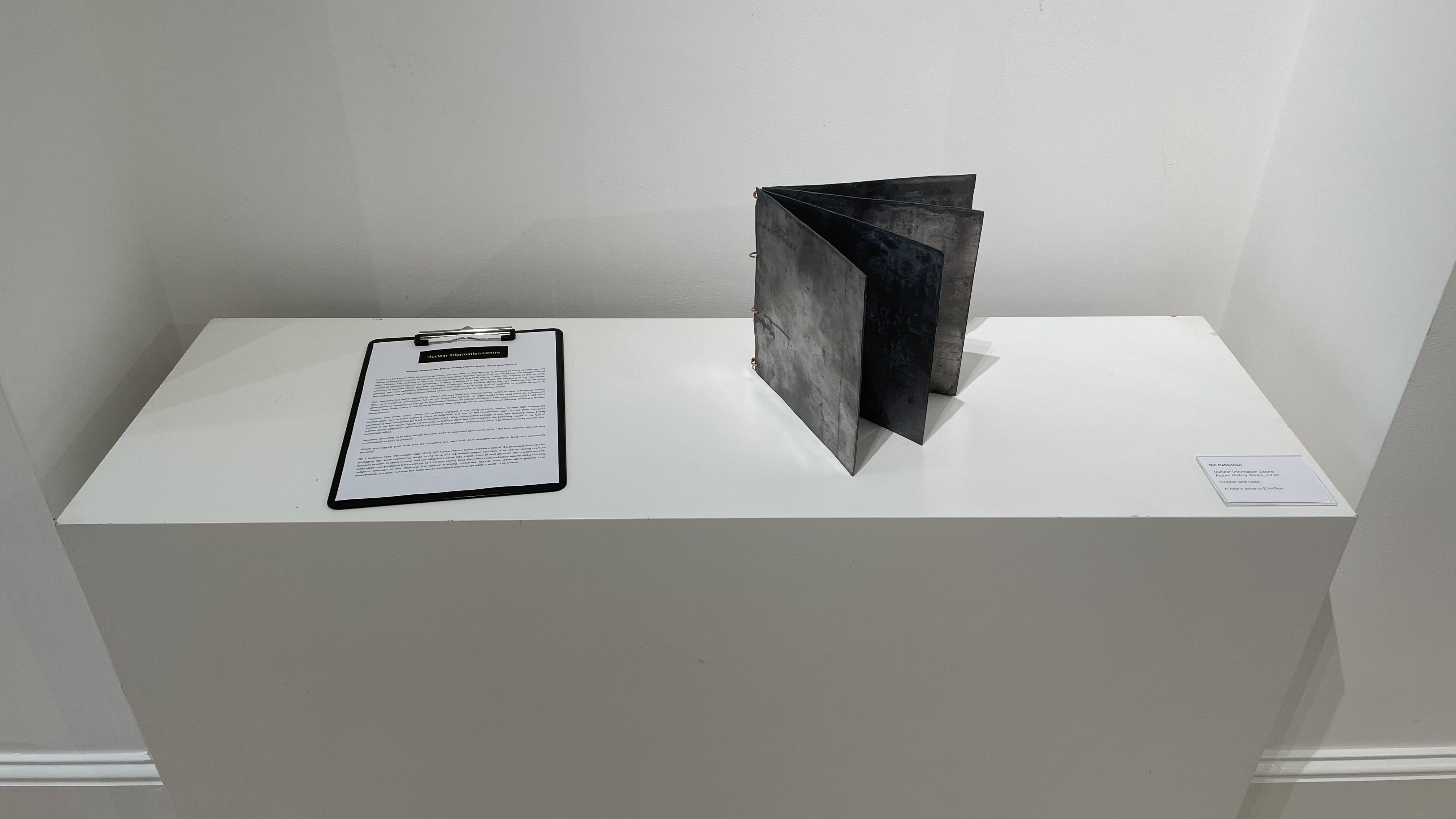Nuclear Information Centre
Nuclear Information Centre: Future History Series, vol 92. (2024).
[NIC/NW/014]
 Nuclear Information Centre: Future History Series, vol 92 [Copper, Lead and Time, currently comprising 4 pages, each page approx 20cm x 20cm].
Nuclear Information Centre: Future History Series, vol 92 [Copper, Lead and Time, currently comprising 4 pages, each page approx 20cm x 20cm].In 2018, a UK government funded programme was launched (in England and Wales only) to find a suitable site and willing community in which to construct a deep Geological Disposal Facility (GDF) for the permanent containment of eight decades and counting of the UKs most hazardous and long-lived nuclear waste. The majority of this currently resides at Sellafield (previously Windscale) in West Cumbria as it has done since the beginning of the UKs atomic activities in the mid 1950s. However, according to Nuclear Waste Services (NWS) who are administering the siting process, the most optimistic timeline suggests a GDF may not be in a full state of readiness for another 50 years. In the meantime, the UK will continue adding to its inventory of Great British Nuclear Waste.
This unwritten but highly engineered copper and lead book was commissioned by the Nuclear Information Centre (NIC) as a sculptural placeholder for the yet unrealised UK GDF, its pages deliberately kept blank for subsequent generations to complete as and when the project reaches an official conclusion. Even once constructed a GDF must remain open while waste is still being generated. How long will this be now that we are officially entering a Nuclear Renaissance?
Currently only three* search areas are actively engaged in the siting process, having formed GDF Community Partnerships: two in West Cumbria (close to Sellafield) and one on the Lincolnshire coast. A third West Cumbrian partnership was withdrawn by NWS in October 2023 citing unfavourable geology. A new GDF Working Group briefly formed in the Northeast (South Holderness) in January 2024 but was dissolved the following month in the face of intense public opposition with East Riding Council voting almost unanimously 54 to 1 to leave the siting process with immediate effect.
However, according to Nuclear Waste Services recently published GDF report 2024, “The door remains open for new communities to join the process”.
Would you suggest your local area for consideration, even with £1m available annually to fund local community projects?
On a technical note, the copper rings of the NIC Future History Series reference one of the proposed materials for packaging high level radioactive waste in the form of thick-walled copper canisters. Also, the remaining uranium isotopes present in spent nuclear fuel will ultimately decay into stable forms of lead although this is a process that takes place over geological timescales (up to 4.5 billion years). Lead also offers good protection against alpha and beta radiation although in this thickness has limited shielding properties against more penetrative gamma rays. Nevertheless, it is good to know this book has an additional practical use while it waits to be written.
*As of 03 June 2025, Theddlethorpe Community Partnertship has officially withrawn from the GDF siting process.
Information last updated: Thu 7 Aug 2025
Back